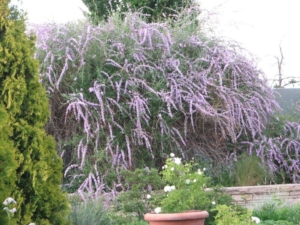Bring More Color to Your Wild Areas
Wildflower Seeds
by Sandy Swegel
At this time of year when we’re mired in cold and snow, I yearn for two delights of Spring: when the daffodils and tulips bloom and when the meadows burst with wildflowers. One thing about wildflowers though, especially in our suburban gardens. A few years after planting it seems that just a few wildflowers start to dominate. Often it’s the bachelor buttons and California poppies, both beautiful flowers, but we need diversity and variety and wild color to really shake winter off.
The secret to a lush wildflower area (besides good rainfall) is to over-seed the area every once in a while with some of your favorite flowers. I usually take the easy way and just throw out a packet of our mixed wildflower seeds to get an overall refreshing of the original mix I planted years ago. But for one friend who has created a “hot colors” theme of red and orange in her garden, we throw out packets of red wildflowers. This year we just did a search for Flowers by Color and picked out the flowers we liked with the truest red colors. We settled on red columbines for Spring, red firecracker penstemons for early summer and red gaillardia for mid-summer.
Finally, my absolute favorite reseeding in the Spring is to seed the Parade of Poppies mix. There just are never enough poppies of any sort in my mind. This year I’ve slipped a seed packet in my coat pocket for some guerilla gardening during my sunny day walks along old abandoned properties and ditches that grows lots of weeds. Poppies will brighten my path this year!
This year I’m also going to try taking a baggie full of our new StrawNet (pellets of straw) when I do my wild area guerilla gardening. The biggest problem with just throwing seeds out onto abandoned land is that I can’t water them every day. StrawNet absorbs water and helps create a little moist barrier for new seeds so I expect it to help more seedlings survive even if we have a dry Spring. Sometimes nature needs a little help to be as beautiful as she can be.
Photo Credit: http://www.fs.fed.us/wildflowers/beauty/columbines/images/aschockleyi/aquilegia_schockleyi_habitat_katewalker_lg.jpg



